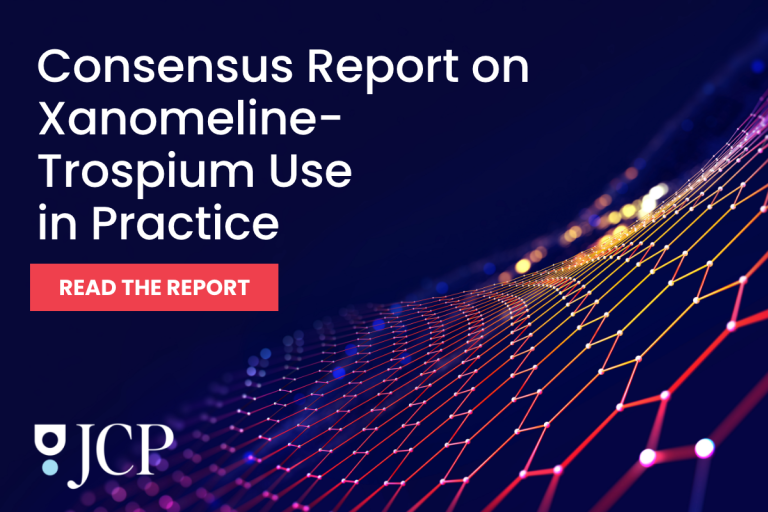Abstract
Background: The association between functional dysconnectivity in the triple networks—the default mode network (DMN), salience network (SN), and frontoparietal network (FPN)—and current suicidal ideation (CSI) in young people with major affective disorders remains unclear.
Methods: This study included 158 young people (mean age: ∼18 years) with major affective disorders (101 with CSI and 57 without CSI) and 64 age- and sex-matched healthy control individuals. Both major depressive disorder and bipolar disorder were diagnosed according to the DSM-5 criteria. CSI was defined by a Montgomery–Åsberg Depression Rating Scale suicide item score of ≥2. All participants underwent resting-state functional connectivity magnetic resonance imaging. Seed-based connectivity analyses were performed, with adjustment for diagnosis and prior suicide attempts.
Results: Compared with the non-CSI group, the CSI group exhibited hyperconnectivity between the anterior insula (SN) and hippocampus as well as between the posterior parietal cortex (FPN) and rectus gyrus (DMN) and hypoconnectivity between the amygdala (SN) and cerebellum crus II. Both the CSI and non-CSI groups exhibited increased functional connectivity between the posterior parietal cortex and emotional perception-related regions, specifically, the superior and middle temporal gyri, compared with healthy control individuals.
Discussion: Suicidality is associated with extensive and pronounced functional dysconnectivity in the SN, FPN, and DMN in young people with major affective disorders.
J Clin Psychiatry 2026;87(1):25m15906
Author affiliations are listed at the end of this article.
Members Only Content
This full article is available exclusively to Professional tier members. Subscribe now to unlock the HTML version and gain unlimited access to our entire library plus all PDFs. If you’re already a subscriber, please log in below to continue reading.
References (42)

- Chang YH, Lin CY, Liao SC, et al. Societal factors and psychological distress indicators associated with the recent rise in youth suicide in Taiwan: a time trend analysis. Aust N Z J Psychiatry. 2023;57(4):537–549. PubMed CrossRef
- Bertuccio P, Amerio A, Grande E, et al. Global trends in youth suicide from 1990 to 2020: an analysis of data from the WHO mortality database. eClinicalMedicine. 2024;70:102506. PubMed CrossRef
- Chen MH, Bai YM, Chen YS, et al. Comorbidity of narcolepsy and schizophrenia in an adolescent patient. J Chin Med Assoc. 2014;77(11):598–600. PubMed CrossRef
- Reeves KW, Vasconez G, Weiss SJ. Characteristics of suicidal ideation: a systematic review. Arch Suicide Res. 2022;26(4):1736–1756. PubMed CrossRef
- Chou CH, Ko HC, Wu JY, et al. The prevalence of and psychosocial risks for suicide attempts in male and female college students in Taiwan. Suicide Life Threat Behav. 2013;43(2):185–197. PubMed CrossRef
- Chang CC, Hsieh KY, Hsu ST, et al. Understanding the mental health impacts of biological disasters: lessons from Taiwan’s experience with COVID-19. J Formos Med Assoc. 2025;124(1):6–14. PubMed CrossRef
- Stange JP, Jenkins LM, Pocius S, et al. Using resting-state intrinsic network connectivity to identify suicide risk in mood disorders. Psychol Med. 2020;50(14):2324–2334. PubMed CrossRef
- Bryant RA, Breukelaar IA, Williamson T, et al. The neural connectome of suicidality in adults with mood and anxiety disorders. Nat Ment Health. 2024;2(11):1342–1349. PubMed CrossRef
- Ren Y, Li M, Yang C, et al. Suicidal risk is associated with hyper-connections in the frontal-parietal network in patients with depression. Transl Psychiatry. 2025;15(1):49. PubMed CrossRef
- Chin FCR, Ballard ED, Minhajuddin AT, et al. Active suicidal ideation associated with dysfunction in default mode network using resting-state EEG and functional MRI - findings from the T-RAD study. J Psychiatr Res. 2024;176:240–247. PubMed
- Chin FCR, Jha MK, Minhajuddin A, et al. Dysfunction of default mode network is associated with active suicidal ideation in youths and young adults with depression: findings from the T-RAD study. J Psychiatr Res. 2021;142:258–262. PubMed
- Ho TC, Walker JC, Teresi GI, et al. Default mode and salience network alterations in suicidal and non-suicidal self-injurious thoughts and behaviors in adolescents with depression. Transl Psychiatry. 2021;11(1):38. PubMed CrossRef
- Kim GW, Farabaugh AH, Vetterman R, et al. Diminished frontal pole size and functional connectivity in young adults with high suicidality. J Affect Disord. 2022;310:484–492. PubMed CrossRef
- Montgomery SA. Maprotiline, nomifensine, mianserin, zimelidine: a review of antidepressant efficacy in in-patients. Neuropharmacology. 1980;19(12):1185–1190. PubMed CrossRef
- Whitfield-Gabrieli S, Nieto-Castanon A. Conn: a functional connectivity toolbox for correlated and anticorrelated brain networks. Brain Connect. 2012;2(3):125–141. PubMed CrossRef
- Whitfield-Gabrieli S, Nieto-Castanon A, Ghosh S. Artifact detection tools (ART). Release;2011;7:11.
- Calhoun VD, Wager TD, Krishnan A, et al. The impact of T1 versus EPI spatial normalization templates for fMRI data analyses. Hum Brain Mapp. 2017;38(11):5331–5342. PubMed CrossRef
- Ashburner J, Friston KJ. Unified segmentation. Neuroimage. 2005;26(3):839–851. PubMed CrossRef
- Ashburner J. A fast diffeomorphic image registration algorithm. Neuroimage. 2007;38(1):95–113. PubMed CrossRef
- Nieto-Castanon A. Handbook of Functional Connectivity Magnetic Resonance Imaging Methods in CONN. Hilbert Press; 2020.
- Worsley KJ, Marrett S, Neelin P, et al. A unified statistical approach for determining significant signals in images of cerebral activation. Hum Brain Mapp. 1996;4(1):58–73. PubMed CrossRef
- Nugent AC, Ballard ED, Gilbert JR, et al. Multilayer MEG functional connectivity as a potential marker for suicidal thoughts in major depressive disorder. Neuroimage Clin. 2020;28:102378. PubMed CrossRef
- Li B, Zhao N, Tang N, et al. Targeting suicidal ideation in major depressive disorder with MRI-navigated Stanford accelerated intelligent neuromodulation therapy. Transl Psychiatry. 2024;14(1):21. PubMed CrossRef
- Chen VC, Chou YS, Tsai YH, et al. Resting-state functional connectivity and brain network abnormalities in depressive patients with suicidal ideation. Brain Topogr. 2021;34(2):234–244. PubMed CrossRef
- Yang Y, Chattun MR, Yan R, et al. Atrophy of right inferior frontal orbital gyrus and frontoparietal functional connectivity abnormality in depressed suicide attempters. Brain Imaging Behav. 2020;14(6):2542–2552. PubMed CrossRef
- Dobbertin M, Blair KS, Carollo E, et al. Neuroimaging alterations of the suicidal brain and its relevance to practice: an updated review of MRI studies. Front Psychiatry. 2023;14:1083244. PubMed CrossRef
- Accolla EA, Aust S, Merkl A, et al. Deep brain stimulation of the posterior gyrus rectus region for treatment resistant depression. J Affect Disord. 2016;194:33–37. PubMed CrossRef
- Ballmaier M, Toga AW, Blanton RE, et al. Anterior cingulate, gyrus rectus, and orbitofrontal abnormalities in elderly depressed patients: an MRI-Based parcellation of the prefrontal cortex. Am J Psychiatry. 2004;161(1):99–108. PubMed CrossRef
- Van Overwalle F, Ma Q, Heleven E. The posterior crus II cerebellum is specialized for social mentalizing and emotional self-experiences: a meta-analysis. Soc Cogn Affect Neurosci. 2020;15(9):905–928. PubMed CrossRef
- Guo Y, Jiang X, Jia L, et al. Altered gray matter volumes and plasma IL-6 level in major depressive disorder patients with suicidal ideation. Neuroimage Clin. 2023;38:103403. PubMed CrossRef
- Wu SCJ, Hsu JW, Huang KL, et al. Functional dysconnectivity of cerebellum and attention networks in emotional dysregulation shared between attention deficit hyperactivity disorder and major depressive disorder: a multimodal imaging study. CNS Spectr. 2023;28(4):470–477. PubMed CrossRef
- Van Orden KA, Witte TK, Cukrowicz KC, et al. The interpersonal theory of suicide. Psychol Rev. 2010;117(2):575–600. PubMed CrossRef
- Ramezani M, Johnsrude I, Rasoulian A, et al. Temporal-lobe morphology differs between healthy adolescents and those with early-onset of depression. Neuroimage Clin. 2014;6:145–155. PubMed CrossRef
- Sun JF, Chen LM, He JK, et al. A comparative study of regional homogeneity of resting-state fMRI between the early-onset and late-onset recurrent depression in adults. Front Psychol. 2022;13:849847. PubMed CrossRef
- Liu CH, Tang LR, Gao Y, et al. Resting-state mapping of neural signatures of vulnerability to depression relapse. J Affect Disord. 2019;250:371–379. PubMed CrossRef
- Li X, Wang J. Abnormal neural activities in adults and youths with major depressive disorder during emotional processing: a meta-analysis. Brain Imaging Behav. 2021;15(2):1134–1154. PubMed CrossRef
- Jankowski KF, Batres J, Scott H, et al. Feeling left out: depressed adolescents may atypically recruit emotional salience and regulation networks during social exclusion. Soc Cogn Affect Neurosci. 2018;13(8):863–876. PubMed CrossRef
- Schwartz J, Ordaz SJ, Ho TC, et al. Longitudinal decreases in suicidal ideation are associated with increases in salience network coherence in depressed adolescents. J Affect Disord. 2019;245:545–552. PubMed CrossRef
- Sobczak AM, Bohaterewicz B, Marek T, et al. Altered functional connectivity differences in salience network as a neuromarker of suicide risk in euthymic bipolar disorder patients. Front Hum Neurosci. 2020;14:585766. PubMed CrossRef
- Li L, Su YA, Wu YK, et al. Eight-week antidepressant treatment reduces functional connectivity in first-episode drug-naïve patients with major depressive disorder. Hum Brain Mapp. 2021;42(8):2593–2605. PubMed CrossRef
- Spielberg JM, Matyi MA, Karne H, et al. Lithium monotherapy associated longitudinal effects on resting state brain networks in clinical treatment of bipolar disorder. Bipolar Disord. 2019;21(4):361–371. PubMed CrossRef
- Neufeld NH, Oliver LD, Mulsant BH, et al. Effects of antipsychotic medication on functional connectivity in major depressive disorder with psychotic features. Mol Psychiatry. 2023;28(8):3305–3313. PubMed CrossRef






